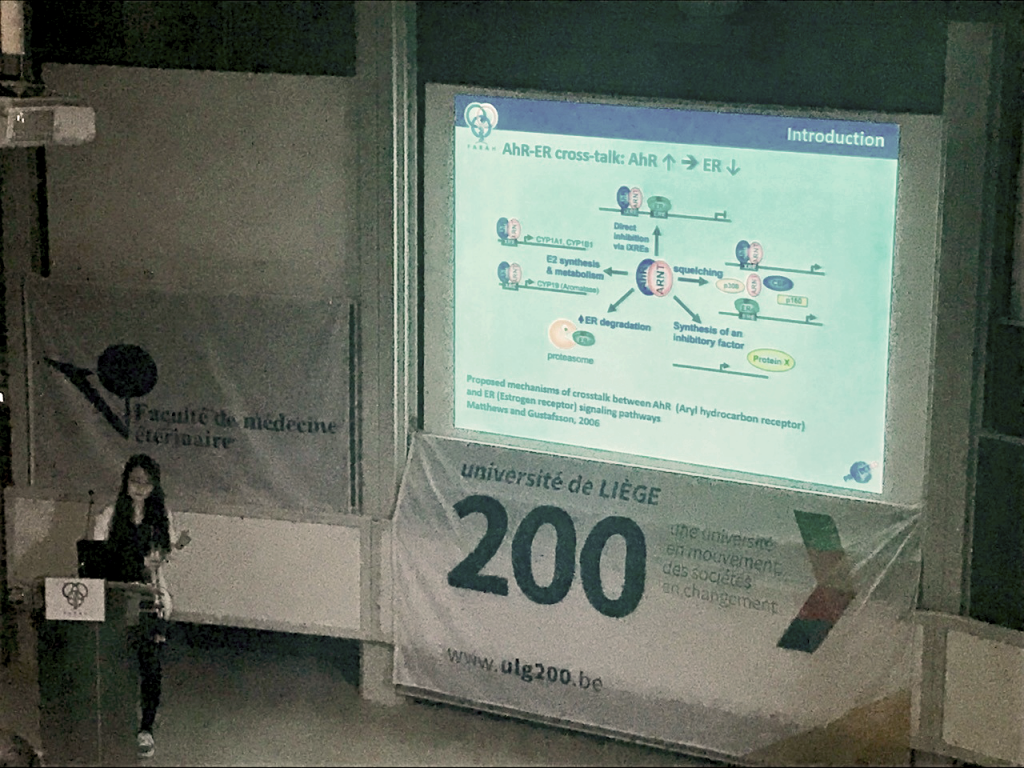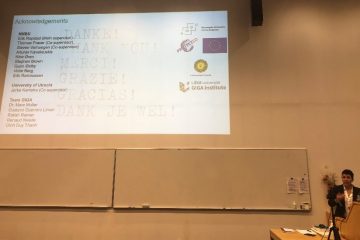by QUE THI DOAN
The 4th annual FARAH conferences gave me a chance to highlight the health impacts of exposure to mixtures of endocrine disrupting chemicals by studying the transactivities of the Aryl hydrocarbon Receptor (AhR) in vitro assays. That was quite a challenge for me as this is the first time I had presented at a conference with both experts and non-specialised audiences. From the conference, I learned how to talk simply and better communicate with the audiences through enthusiasm.
The Department of Fundamental and Applied Research for Animals and Health (FARAH) in the University of Liège organizes an annual scientific day called the FARAH Day. This meeting offers an opportunity for all academics, scientists, technical, administrative staff and young students to interact and exchange their research interests, and also promotes the social life within the FARAH.

Endocrine disruptors have been associated with many kinds of cancers, as well as dysfunctional reproductive systems or offspring abnormal developments. We often see the toxicity of an endocrine disruptor (e.g. dioxins) as its single effect. But humans nowadays are exposed to a ‘cocktail’ of endocrine disruptors at the same time, rather than to one compound then to the others. In this study, we found that in vitro exposure to a mixture of 29 persistent organic pollutants reduced significantly AhR activities. Particularly, the effect is profound when the mixture concentration is 75 times higher than their levels in the human blood. That can lead to an adverse effect on human health and also a possible impact on the activities of other signaling pathways, including those mediated by estrogen receptors.
Evaluation the AhR activities of individual compounds in the mixture showed that the mixture activity is much higher than the activities of each component. In other words, taking the effect of one single compound into account at once is not sufficient to study their health impact. Therefore, we need to understand the toxicity of pollutants in their natural mixture, where they act with each other to produce these cocktail effects. The study contributes to the understanding of why we should focus on the mixture effect: because of its relevance to human exposure routes and its certain effect on human health.



0 Comments